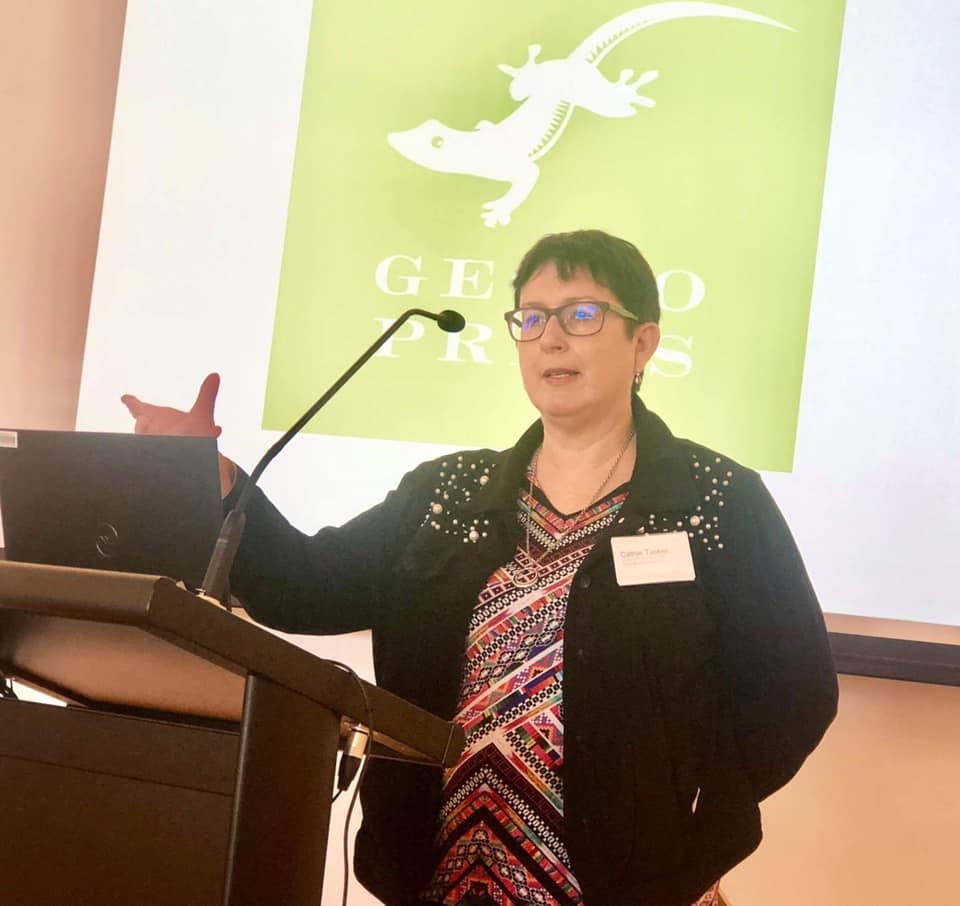How do you keep your storytelling engaging, surprising, satisfying?
Early Tuesday morning, we along with a gaggle of excited conference delegates, gathered in the beautiful Mitchell Building of the State Library of NSW, excited, for a writers Masterclass with Cathie Tasker and Julia Marshall. What a wonderful and unique opportunity to get two experienced industry professionals in one room to talk about picture books.
Cathie Tasker has been a librarian, an editor at Scholastic Books, HarperCollins, Koala Books and now is a Creative Writing Teacher with the Writers Centre of NSW. I (Coral) have nothing but absolute love and respect for Cathie, who found me wading around in the slush pile about ten years ago, and gave me my ‘first break’ in publishing.
Julia Marshall is a New Zealand based publisher of Gecko Press, having just won best publisher of the year in 2018. With this dynamic duo in the room, we were all very excited to listen and learn.
After some introductory comments, Cathie led us through a reading and discussion of the classic picture book Guess How Much I Love You by Sam McBratney and Anita Jeram. We considered its structure, positives and negatives and thought about it through an editor’s lens.
Each delegate sat and soaked up countless pearls of wisdom and insight from these ‘masters’ of writing. Cathie continued to speak about the importance of Structural Editing - the need to:
Read
Rest
Re-evaluate
Rinse and Repeat
We were reminded that the ‘first read’ is the most important; to read without distraction. We were encouraged to read our manuscripts as a child, and then as a parent. We were also encouraged to read our manuscripts as a publisher (from a marketability point of view) and then as an editor (to consider the amount / cost of work required).
“LEAVE ROOM FOR NOT ONLY THE ILLUSTRATOR BUT THE READER”
Julia inspired us to leave room in our manuscripts not only for the illustrator but for the reader. “Children can leap with you if given the right ways.” Julia went on to talk about the ‘quiet child’ in the story and the importance of emotional core of the story. “The book is not complete until you have a reader.”
Julia then talked us through the picture book, That’s Not a Hippopotamus by Juliette MacIver and Sarah Davis. Julia showed some of Sarah Davis’ early sketches for the book, which gave insight into the process of matching illustration to text.
After giving us insight into page turners and the delight of onomatopoeia, it was then our turn to speak. Each delegate had been prompted to bring a 30 word pitch to a Picture Book Manuscript they had written. Based on the pitches, a few stories were chosen to read out aloud and then be discussed and dissected. This was done with honesty and respect, whereby not only the author benefited but every delegate in the room also gained insight and knowledge.
We learnt there is a growing trend in Australia for picture books to only be 250 words in length, hence the importance of leaving room for the illustrator and allowing the reader to make leaps in story given the right words. We reminded again to make every word count.
Hearing Cathie and Julia’s comments on the manuscripts was fascinating as they had differing but equally insightful perspectives. Some of the general comments included the need to talk through the child in the book and make sure the voice is not too adult. Cathie also put her editing hat on to demonstrate how one of the manuscripts could be effectively cut back to focus on the core of the story.
Much wisdom was gained within the two-hour masterclass that morning, and each delegate left the room with more knowledge and confidence to tackle our manuscripts and produce even more creative and well written stories.
Congratulations to all those brave participants who had their work critiqued in front of the class, it was so lovely to hear all the unique story ideas being developed and quality words produced. The open sharing of words, ideas and viewpoints made this a fun and engaging workshop.
by Coral Vass and Sarah Wallace
#SCBWISyd



